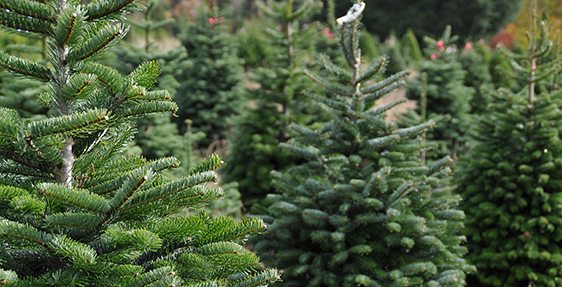AFM NEWS
Oh Christmas tree, Oh Christmas tree, How Lovely Are Your Branches

As a child, some may have fond memories of climbing into the family vehicle and riding to a Christmas tree farm. The anticipation, searching, and scent of pine are all part of the experience. Did you know that these beautiful trees are a labor of love that starts years before they grace our living rooms? Here are some frequently asked questions about Christmas’ most popular holiday décor.
Where do they grow? According to the National Christmas Tree Association, there are nearly 15,000 Christmas tree farms in the United States, and over 100,000 people are employed full-time in the industry. The top-producing Christmas tree farms are in Oregon, Washington, Wisconsin, Michigan, North Carolina, and Pennsylvania, spanning around 350,000 acres.
How do they grow? Land preparation includes eliminating perennial weeds, pushing/removing stumps and rocks, checking and establishing an appropriate soil pH, and more. Suitable species are chosen based on the climate, growing conditions, age, and size, and are varieties of firs, spruces, and pines. Although these evergreen trees are naturally beautiful, their iconic shape is manmade. The trees are constantly pruned and sheared for roughly 7-15 years until they are six feet tall. Not only are the trees shaped, but they’re fed and fertilized to prevent diseases and insect infestations.
Why should I buy a natural Christmas tree? Opting for a natural Christmas tree not only supports local economies but is an environmentally friendly choice. Artificial Christmas trees are typically manufactured from nonrecycled PVC plastics. When produced, they release dioxins (Persistent Organic Pollutants [POP]; in other words, they take a long time to break down) that can cause developmental and liver problems. Interesting side note: artificial trees were created by the Addis Brush Company, which manufactured toilet bowl brushes! Clearly, real trees are a far superior product and have numerous environmental benefits, like storing carbon, providing oxygen, creating wildlife habitat, supporting local tree farmers, and creating jobs. Trees are renewable resources, and new ones will be planted in place of trees that have been cut down with a 3:1 ratio.
What should I do with my Christmas tree after Christmas is over? The discarded tree can continue to have environmental benefits. Christmas trees can be mulched or composted, but only if they are free from tinsel or snow spray. Many municipalities offer “treecycling” through curbside pickup. Another option is to purchase a living tree, also known as balled and burlapped (B & B), with large root balls wrapped in burlap. These can be kept in the house for two weeks and then be planted outside. Check your local extension office to learn more about tree species suited to your climate and conditions, as well as care tips during the holiday season and after the tree is planted.
Patronizing a local Christmas tree farm can be rewarding, and the experience may create a cherished tradition for friends and family to enjoy year after year.
